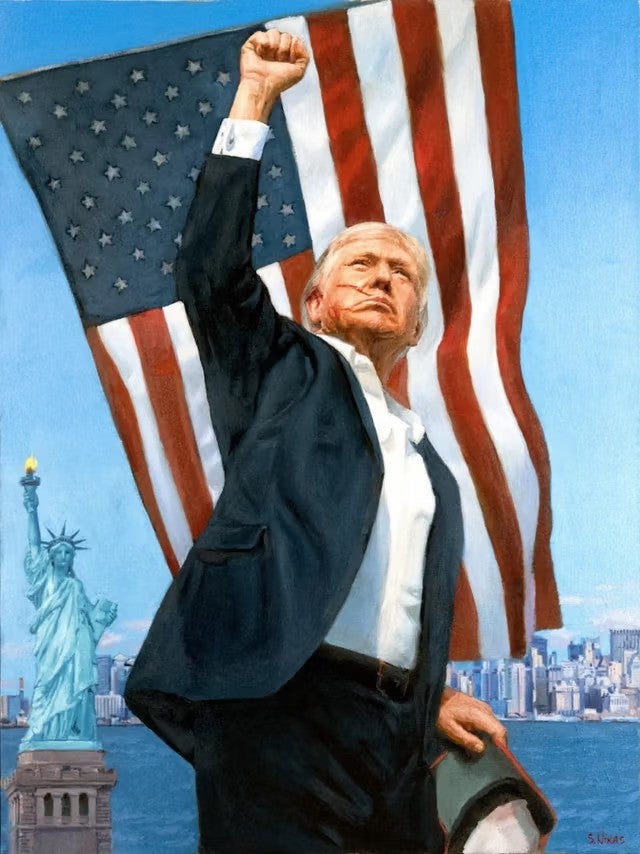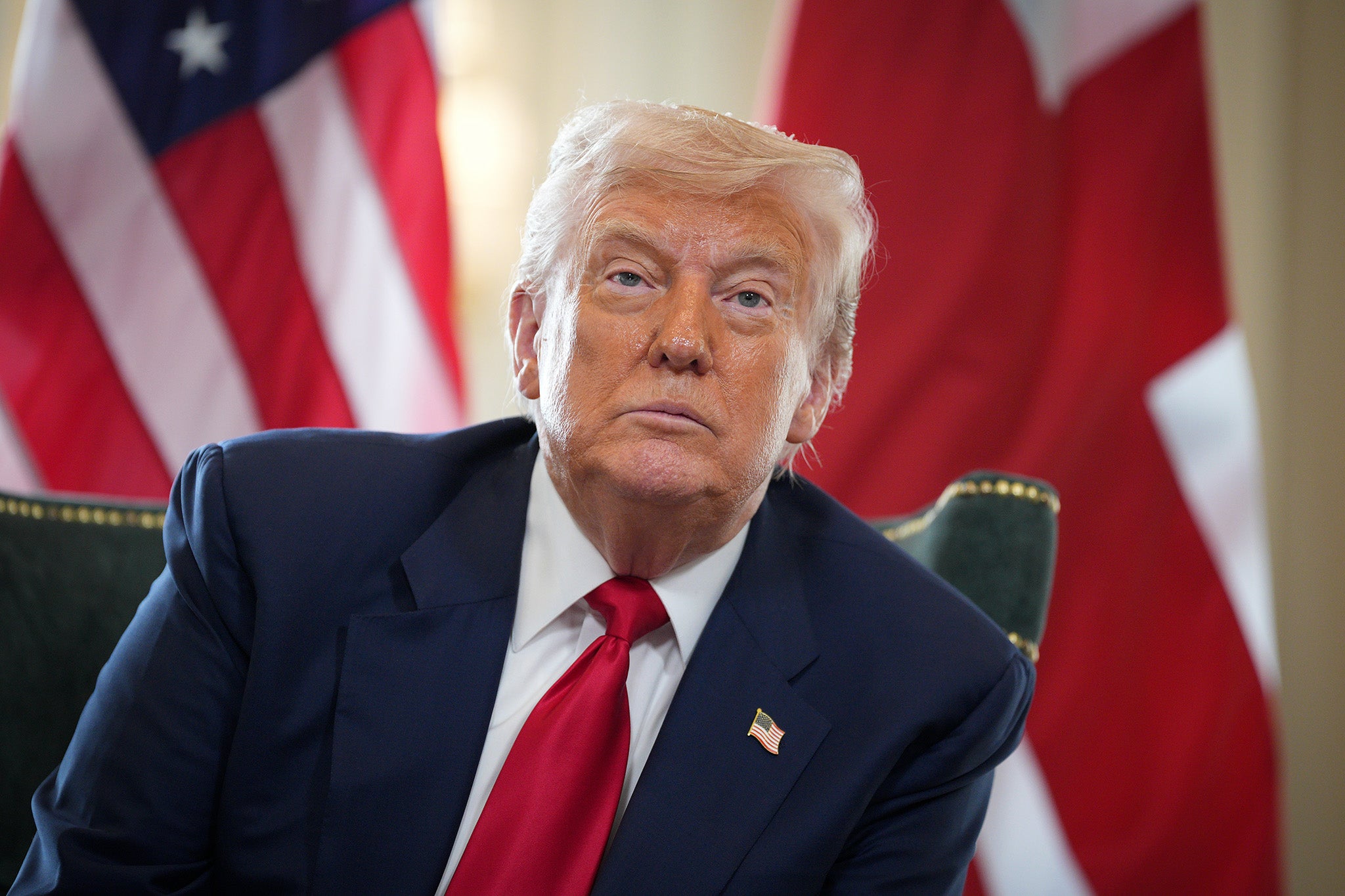Arriving in Moscow ahead of Donald Trump’s “ceasefire or suffer” Friday deadline for the Kremlin, Steve Witkoff may wonder what he’s there for. To threaten? Reassure? Or repeat the cooing craven performances he’s shown Vladimir Putin in the past?
The US president has been taking a much tougher line, in public, when it comes to getting Russia to wind down its war against Ukraine since the blatantly pro-Putin stand of his earlier presidency.
If Russia doesn’t join ceasefire discussions by Friday, Trump has threatened more sanctions against Moscow.
And after Dmitri Medvedev, deputy director of Russia’s security council and the Kremlin’s in-house troll, threatened unspecified “further steps” following Russia’s withdrawal from the defunct Intermediate Range Nuclear Forces Treaty, the US president announced he was moving two nuclear strike submarines to threaten Moscow.
Both this and Friday’s deadline are empty and performative.

Russia’s trade with the US is close to zero anyway, after earlier sanctions saw it plummet. More bilateral throttling won’t make any difference.
And the whole point of the US nuclear deterrent is that it has strike capability against Russia 24/7 from submarines that prowl the oceans, in secret, armed with long range nuclear missiles – they don’t need to be on Putin’s door step to rattle his cage.
Witkoff, a former property tycoon, was appointed Trump’s Middle East envoy and has since enjoyed a role as the president’s international diplomatic Mr Fixit. But he’s failed to bring any peace to the Middle East and failed to deliver on Trump’s boast to end the war in Ukraine in “24 hours”.
Ukraine has repeatedly agreed to a ceasefire or talks to achieve one. Russia has repeatedly rejected the idea of even a temporary suspension of fighting and has continued to make small gains in its efforts to capture eastern Ukraine.
This has prompted Trump to call out Putin for his “bullshit”.
If Trump is sincere in putting pressure on Russia economically, then he will have to make good on his threats to impose sanctions on countries that import Russian fossil fuels.
Russia funds its war in Ukraine with about $500 million worth of fossil fuel sales every day. The European Union has cut imports from Russia severely. But since 2022, the EU has imported close to €300 billion of Russian goods – mostly gas.

India, meanwhile, has seen oil imports from Russia surge. Last year India imported $65.7 billion worth of goods, mostly oil, from Russia and Delhi insists that in doing so India is bringing stability to the world oil market.
In response, Trump has threatened India with more sanctions, along with China, another big Russian importer.
To offset the potential surge in oil prices this could bring, Gulf countries have recently increased their oil production.
“If energy goes down enough, Putin is going to stop killing people,” Trump said in an interview on CNBC this week. “If you get energy down, another $10 a barrel, he’s going to have no choice because his economy stinks.”
So, Trump is angry with Putin.
But not angry enough to do anything that could affect Putin’s main priority – which is to secure the Ukrainian provinces of Kherson, Donetsk, Luhansk, and Zaporizhzhia and continue to hold Crimea.
All this year he has played Trump as a patsy. Russia’s president has exploited the baffling admiration the US president holds for him to undermine military and intelligence support for Kyiv.
He has seen Trump act in Russia’s interests by weakening the Nato alliance and insisting that Ukraine accept most of Moscow’s terms for any future peace deal ahead of talks.

On top of that, it feels like Witkoff has been reduced to a simpering Kremlin sycophant. The property mogul accidentally delivered Putin’s spooks a trove of intelligence data by using his unsecured personal mobile phone on previous trips to Moscow and during America’s air attacks against the Houthis in Yemen.
Putin has invaded Ukraine. His political opponents die in jails, rivals and critics fall out of windows and others risk dying mysteriously from gunshot wounds or being poisoned with nerve gas. But Witkoff said after a previous trip to Moscow that Putin’s “not a bad guy” and that he is “super smart”.
Those smarts extend to the very obvious truth that Trump is easily flattered. In an interview he gave in March after visiting Putin, and failing to get a ceasefire agreement, Witkoff could not name the four provinces that Russia’s president wanted to capture.
But he did give Putin a PR boost with his boss by saying: “He gave me a beautiful portrait of Trump he had commissioned from a leading Russian artist and asked me to bring it back to the White House. Trump was clearly touched by it. This is the kind of connection that we’ve been able to re-establish through, by the way, a simple word called communication.”

Moscow has given every indication that Witkoff’s mission will fail and be ignored. Putin may now believe that he is closer to winning the territory he wants in Ukraine.
He is, Ukraine believes, forming 10 new army divisions to fight in Ukraine this year. That’s at least 100,000 more men – 30,000 more than the whole of the British army.
It is not clear why Trump has favoured Putin over Ukraine for so long. It seems his latest peevish remarks and threats do not amount to a change of attitude but is the pouting of a friend spurned.
There’s no sign that the US is going to help Ukraine win by supplying more weapons and fulsome support for Europe’s youngest democracy.
And Putin knows it will be a long time before Trump stops preening himself in front of the “beautiful” Russian portrait showing a heroic, defiant and blood spattered Trump painted in a modern, but mistakenly Soviet Realist style.


